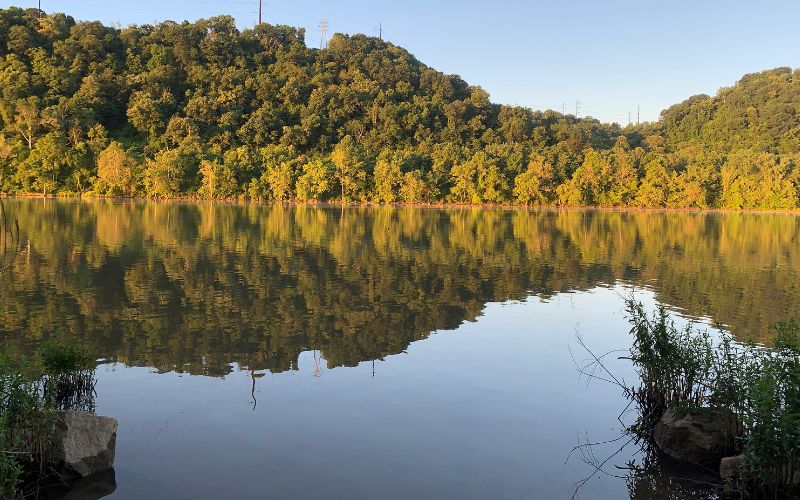
- Details
- By Native News Online Staff
Leaders of the Seneca Nation are once again calling on the City of Olean, New York to take decisive action to fix longstanding failures in its wastewater and stormwater infrastructure. These failures have led to the chronic discharge of untreated sewage into the Allegheny River—an invaluable natural and cultural resource for the Seneca people.
During a meeting with the Olean Common Council on Tuesday evening, elected members of the Seneca Nation Council demanded immediate intervention, particularly as the region braces for anticipated overflows caused by melting snow and spring rains. The Council members read aloud and delivered a letter to Mayor William Aiello on behalf of Seneca Nation President J. Conrad Seneca.
“Protecting the public health of Olean citizens by shifting dangerous wastes, produced in Olean, downstream to other communities such as the Seneca Nation is unconscionable and unacceptable,” President Seneca wrotw in his letter. “This warped mindset and discharge activity must end.”
The issue is not new. In 2001, the New York State Department of Environmental Conservation issued an Administrative Order of Consent requiring Olean to upgrade its wastewater treatment system to prevent discharges into the river. Over the years, the order has been revised multiple times to extend the city’s compliance deadline—now set for 2042.
For the Seneca people, this delay is unacceptable. A 35-mile stretch of the Allegheny River—known in Seneca as “Ohi:yo’” or “beautiful river”—runs through Seneca Nation territory, where many Nation members live, swim, fish, and boat. Since 2007, there have been 46 recorded sewage overflows from Olean’s system, releasing millions of gallons of waste into the river. In April 2024 alone, heavy rains led to two overflows, dumping approximately 186,000 gallons of untreated sewage into the water.
Despite the health and environmental risks, Olean officials have continued to make only minimal investments—spending $250,000 annually on repairs while working toward the distant 2042 compliance deadline.
“This is an inadequate response,” President Seneca said. “It is tantamount to placing a band-aid on a gaping wound. The city’s discharges are polluting our Nation’s waterways, disturbing Mother Earth and future generations, and interfering with our treaty-protected right to the free use and enjoyment of our lands.”
Adding to the frustration, the city has prioritized other capital projects in recent years, issuing over $5 million in bonds for discretionary initiatives, including renovations to an ice rink, a farmers’ market, a park stage, restrooms, a dog park, and a splash park.
“We cannot afford to wait decades for Olean to adequately address its blatant wastewater discharge failures and to finally prioritize the people they threaten,” President Seneca added. “It is long past time for the city to do the right thing and take action to protect the river – Ohi:yo’, - for all.”
More Stories Like This
Trump signs law that revokes some limits on drilling in Alaska’s National Petroleum ReserveSouthern Sierra Miwuk Nation Gets 900-Acres ofLand Back
Chilkat Indian Village Tells New Palmer Mine Owners They Are “Not Welcome” in Chilkat Valley
Tribes, Coastal Group Ask Army Corps to Revoke Permit for Texas Export Terminal
Michigan Tribes Tell Supreme Court: Don’t Bail Out Enbridge
Help us defend tribal sovereignty.
At Native News Online, our mission is rooted in telling the stories that strengthen sovereignty and uplift Indigenous voices — not just at year’s end, but every single day.
Because of your generosity last year, we were able to keep our reporters on the ground in tribal communities, at national gatherings and in the halls of Congress — covering the issues that matter most to Indian Country: sovereignty, culture, education, health and economic opportunity.
That support sustained us through a tough year in 2025. Now, as we look to the year ahead, we need your help right now to ensure warrior journalism remains strong — reporting that defends tribal sovereignty, amplifies Native truth, and holds power accountable.
 The stakes couldn't be higher. Your support keeps Native voices heard, Native stories told and Native sovereignty defended.
The stakes couldn't be higher. Your support keeps Native voices heard, Native stories told and Native sovereignty defended.
Stand with Warrior Journalism today.
Levi Rickert (Potawatomi), Editor & Publisher


